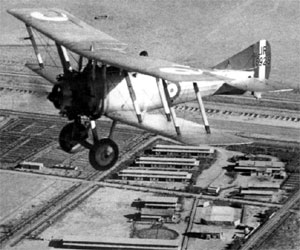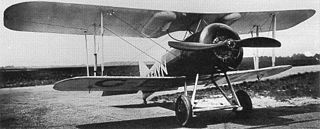
The Blackburn Shark was a carrier-borne torpedo bomber designed and built by the British aviation manufacturer Blackburn Aircraft. It was originally known as the Blackburn T.S.R., standing for "torpedo-spotter-reconnaissance", in reference to its intended roles. The Shark was the last of Blackburn's biplane torpedo bombers.

The Blackburn Iris was a British three-engined biplane flying boat of the 1920s. Although only five Irises were built, it was used as a long-range maritime reconnaissance aircraft by the Royal Air Force, where it equipped a squadron for four years, being used to carry out a number of notable long-distance flights. The final version of the Iris, the Iris Mark V was developed into the aircraft that replaced it in Squadron service, the Blackburn Perth.

The ANEC IV Missel Thrush was a 1920s British two-seat light aircraft built by Air Navigation and Engineering Company Limited at Addlestone Surrey.

The Armstrong Whitworth A.W.14 Starling was a prototype British single-seat biplane fighter developed for the Royal Air Force in the late 1920s which unsuccessfully competed against the Bristol Bulldog.

The Avro Cadet is a single-engined British biplane trainer designed and built by Avro in the 1930s as a smaller development of the Avro Tutor for civil use.

The Avro Club Cadet was a 1930s single-engined British biplane trainer aircraft, designed and built by Avro as a development of the earlier Cadet. It was planned for private and club use and, unlike the Cadet, was fitted with folding wings.

The Avro 627 Mailplane was a British biplane developed in 1931 by Avro from the Avro Antelope bomber as a mail plane for use in Canada. Only one was built which ended up being used as a test bed.

The Blackburn F.2 Lincock was a British single-seat lightweight fighter produced by Blackburn Aircraft Limited.

The Blackburn Bluebird IV was a single-engine biplane light trainer/tourer biplane with side-by-side seating designed by the British aviation manufacturer Blackburn Aircraft. It was an all-metal development of the wooden Blackburn Bluebird I, II and III aircraft.

The Armstrong Siddeley Genet is a five-cylinder, air-cooled, radial engine for aircraft use built in the UK, first run in 1926. It developed 80 hp at 2,200 rpm in its final form and was a popular light aircraft powerplant. Following the company tradition with a slight deviation the engine was named after the Genet, a catlike animal of the same order but different family.

The Nieuport Nighthawk was a British fighter aircraft developed by the Nieuport & General Aircraft company for the Royal Air Force towards the end of the First World War. Although ordered into production before the aircraft first flew, it did not enter large scale service with the RAF owing to unreliable engines. Re-engined aircraft did see service in Greece, serving from 1923 to 1938.

The Westland Widgeon was a British light aircraft of the 1920s. A single-engined parasol monoplane, the Widgeon was built in small numbers before Westland abandoned production in 1929.

The Gloster Grouse was a British biplane of the 1920s developed by the Gloster Aircraft Company. Often referred to as the prototype to the Gloster Grebe, the Grouse originally built as an experimental aircraft and then later developed as a trainer. Despite its compact design and maneuverability, the Grouse was not in itself a commercial success, although it formed the basis for the Gloster Grebe and Gamecock fighters which were used by Britain's Royal Air Force into the 1930s.

The Blackburne Thrush was a 1,500 cc three-cylinder radial aero-engine for light aircraft produced by Burney and Blackburne Limited. Burney and Blackburne were based at Bookham, Surrey, England and was a former motorcycle manufacturer.

The Avro 562 Avis was a two-seat light biplane designed and built by A.V.Roe and Company Limited at Hamble for the 1924 Lympne Light Aeroplane Trials.

The Southern Martlet was a single-engined, single-seat biplane sports aircraft. Six were built, including the rather different and unsuccessful Metal Martlet.

The PWS-51 was a Polish sports plane of 1930, a single-engine low-wing monoplane, constructed by the Podlaska Wytwórnia Samolotów (PWS), that remained a prototype.

The Blackburn R.2 Airedale was a single-engine three-seat monoplane deck-landing aircraft for land and sea reconnaissance, built in the UK in 1924. Only two were built.

The de Havilland DH.56 Hyena was a prototype British army cooperation aircraft of the 1920s. A single-engined biplane, the Hyena was designed against an RAF requirement, but was unsuccessful with only two being built, the Armstrong Whitworth Atlas being preferred.

The Fairey Ferret was a 1930s British general-purpose biplane designed and built by the Fairey Aviation Company. It performed well in trials but was not ordered into production.





















